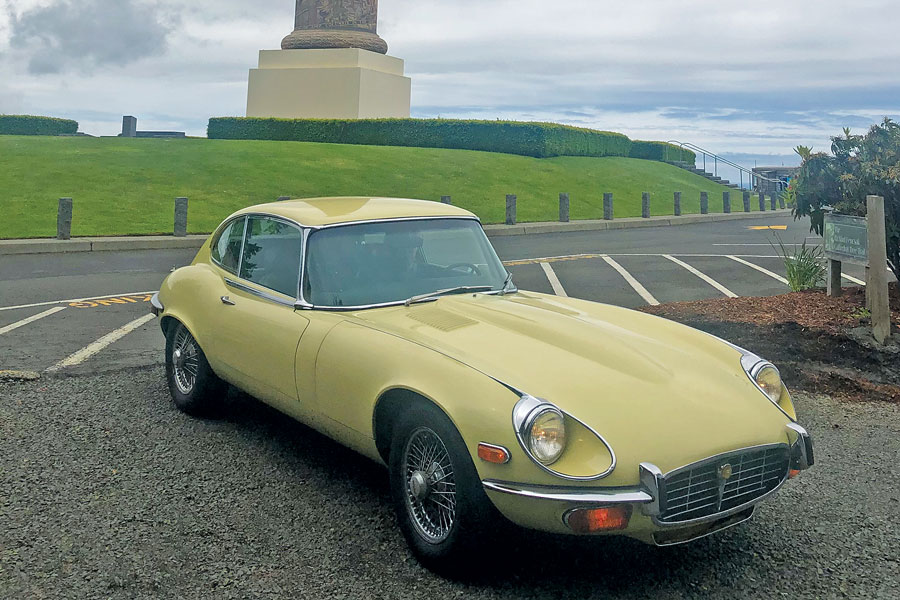
CARFAX was founded in 1984 in Columbia, MO, by a computer professional named Ewin Barnett III. He worked together with Robert Daniel Clark, an accountant from Huntingdon, PA.
It started with a database of 10,000 records, but the company was soon getting reports from all 50 states. CARFAX is now headquartered in Centreville, VA, with a data center operation in Columbia, MO.
CARFAX Vehicle History Reports are available for used cars and light trucks manufactured since model-year 1981. That’s when the National Highway Traffic Safety Administration standardized the 17-character vehicle identification number (VIN). Using this unique identifier, a CARFAX can be generated from its database of over 24 billion records.
The days of car cards
When SCM was started 35 years ago, standard practice was for an auction company to tape a 5-by-7-inch card to the windshield of a car being sold (“the car card”). VIN numbers were not displayed, nor was any meaningful historical information.
In those Wild West days, it was truly a “buyer beware” way to purchase a car.
At first, CARFAX was irrelevant to collector-car purchases, as these novel reports (originally delivered by fax machine, hence the name) only concerned cars from 1981 forward. Today, those same 1981 models are 40 years old, well past the typical 25-year delimiter used to define collector cars.
CARFAX now pulls data from 112,000 different sources, according to the company, including DMVs in the U.S. and Canada, as well as police and fire departments, collision-repair facilities and auto auctions.
As online auctions proliferate, you will see that almost all their listings have one thing in common: a CARFAX report. While no substitute for an in-person inspection, one of these reports can turn up things that an appraiser would be hard-pressed to find.
I asked SCM Contributor Dean Laumbach, a frequent buyer and seller on online auctions, about the importance of CARFAX.
“Running a CARFAX report is the absolute first step you must take when you decide to get serious about potentially purchasing a post-1981 collector car. The information it provides is the most comprehensive, and I would not even consider buying a car without this report being checked,” he said.
“Besides the accident and damage history, these reports also provide a tremendous amount of information regarding the vehicle’s service history,” Dean continued. “There are many times that this documentation is lost over the vehicle’s lifetime with little to no chance of the original documents being recovered.
“The cost of the report is nominal compared to the benefits it provides.”
Before CARFAX
For pre-1981 vehicles, the SCM Platinum Auction Database can often be your only resource. I recently came across a 1971 Jaguar E-type coupe, which was, of course, too old to have a CARFAX report.
I plugged the VIN number, 1S71487BW, into the Platinum database and a record came up.
One of our auction reporters had viewed the car at the Kruse Auburn sale in 2001. The reporter noted that the car showed 16,800 miles. (The E-type went unsold then at $10,750.)
The car now showed 22,000 miles. I found it plausible that the car had covered just 5,200 miles in the 19 years since the Kruse auction. It had been owned and garaged by the seller’s elderly father, and he had simply not driven it very much. This also supported the claim of it having original paint and interior.
I bought the car in an online auction for $39,375, including buyer’s premium.
If I had not had the Platinum listing as a point of reference for the mileage being accurate, chances are I would not have purchased the car.
Having this database listing was a stroke of luck, and it facilitated my purchase. Today, many of the cars that are listed on online auctions are less than 40 years old. Consequently, a CARFAX is available, arming bidders with more information to make educated decisions.
From a bidder’s perspective, the most important words in a listing can be “This car is offered with a clean CARFAX.”
What a response
Since announcing the 2021 SCM 40 Under 40 in the April issue, we have been inundated with responses, already surpassing the total number of submissions we received during our inaugural 40 Under 40 nominating campaign in 2017. The deadline for this year’s nominations is May 15.
If you have not already made a nomination (or two), there is still time to tell us about that up-and-coming enthusiast. Fill out the form on our website at sportscarmarket.com/scm40. (If you prefer to email, contact us at scm40@sportscarmarket.com. For snail mail, our address is SCM 40, 8835 SW Canyon Lane, Suite 312, Portland, OR 97225.) Be sure to send both the name and contact information for the person you are nominating, as well as your own name and contact information. Tell us why you think this person is exceptional. (See our announcement on p. 167.)
The response from the collector-car community has been truly impressive. We look forward to reading the nominations and learning more about what is sure to be a remarkable group of people. They are shaping the future of our collector-car world. ♦